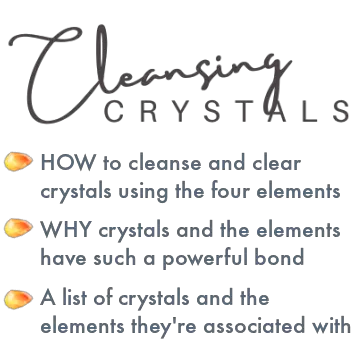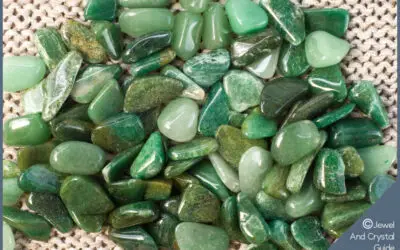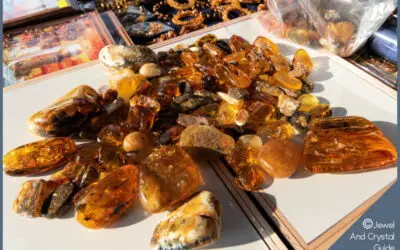Got some questions about real amber?
I’ve already covered how to test if a piece of amber is real and everything you need to know about amber in this guide, but there are still a few unanswered questions that simply must be answered.
So, without further ado, below are the answers to 12 common questions about real amber…
Does real amber rust?
Real amber does not rust. Rust happens when iron and iron-based metals are exposed to oxygen and water. Amber is fossilized tree resin made up of carbon, hydrogen, and oxygen. It does not contain iron or metals that can rust.
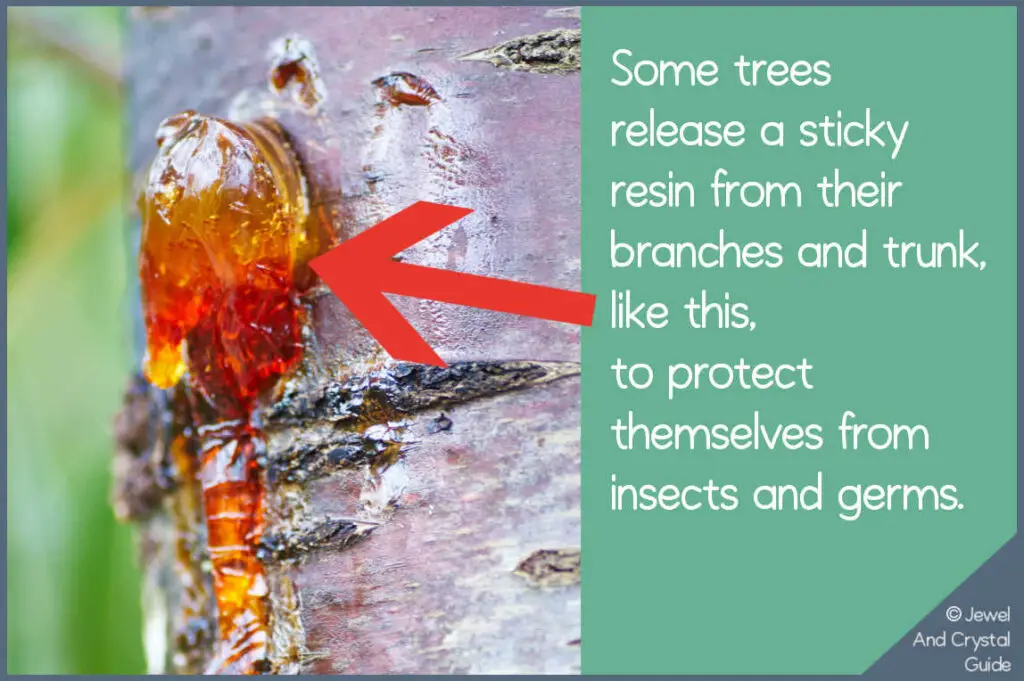
If a piece of jewelry has amber set in silver or a cheap alloy, the silver can tarnish and the alloy will oxidize and change color over time. These other materials “rust,” but not amber.
Does real amber change color?
Real amber can change color over a long period of time. When amber is first formed, it usually has a warm golden to orange-brown color. But amber can turn black, yellow, or green if organic compounds in the resin react with oxygen or degrade, or impurities get into the amber.
Amber can also turn lighter or darker. Heat and sunlight make amber darker, and light fades amber over time. Oils, resins, or other substances in the surrounding environment can also change amber’s color.
Color changes in amber usually happen over years or even centuries, and only happen under the right conditions and depends on certain things, like the tree the amber came from.
If you have a piece of amber, you may notice subtle color variations over time, but drastic or sudden color changes are unlikely.
Does real amber feel like plastic?
Real amber does not feel like plastic. Amber has a warm, smooth, and polished surface. It’s quite lightweight, and the texture is often described as organic and resinous.
Plastic can have a range of textures depending on the type and manufacturing process. But most plastics have a smoother, more uniform surface than the natural texture of amber. Plastic tends to feel colder to the touch and can have a synthetic or artificial quality to it.
Does real amber burn?
Real amber can burn. Amber is fossilized tree resin, and like other organic materials, it is combustible. When exposed to an open flame or intense heat, amber can ignite and burn. But it has a relatively high ignition temperature and needs a sustained heat source to start burning.
Amber forms a black sooty residue as it burns, and the flame may be relatively small and localized. Burning amber can release toxic fumes, so it’s not recommended to intentionally burn amber for recreational purposes or in enclosed spaces.
Does real amber melt?
Real amber can melt when exposed to temperatures between 392 to 716 °F (200 to 380 °C), but amber tends to burn more often than it melts. Amber has a relatively low melting point compared to many other minerals and the exact melting point depends on its composition and impurities.
Does real amber float?
Real amber usually floats on the surface of water rather than sinks. But some amber pieces are more prone to sinking or only partially float, like those with more impurities or inclusions, those that have been treated, and very small or thin pieces of amber.
Does real amber dissolve?
Real amber does not readily dissolve in water, oils, or mild solvents. Amber is chemically resistant and insoluble in most organic solvents, such as alcohol, acetone, or mineral spirits, but certain chemicals can dissolve or degrade amber under certain conditions.
For example, strong acids, such as hydrochloric acid or sulfuric acid, can slowly dissolve amber over time.
Does real amber have bubbles?
Real amber can contain bubbles that got trapped in the tree resin as it solidified and transformed into amber over millions of years. These bubbles can be various sizes and shapes. The presence of bubbles can help distinguish it from imitations or synthetic materials, but not all amber has bubbles.
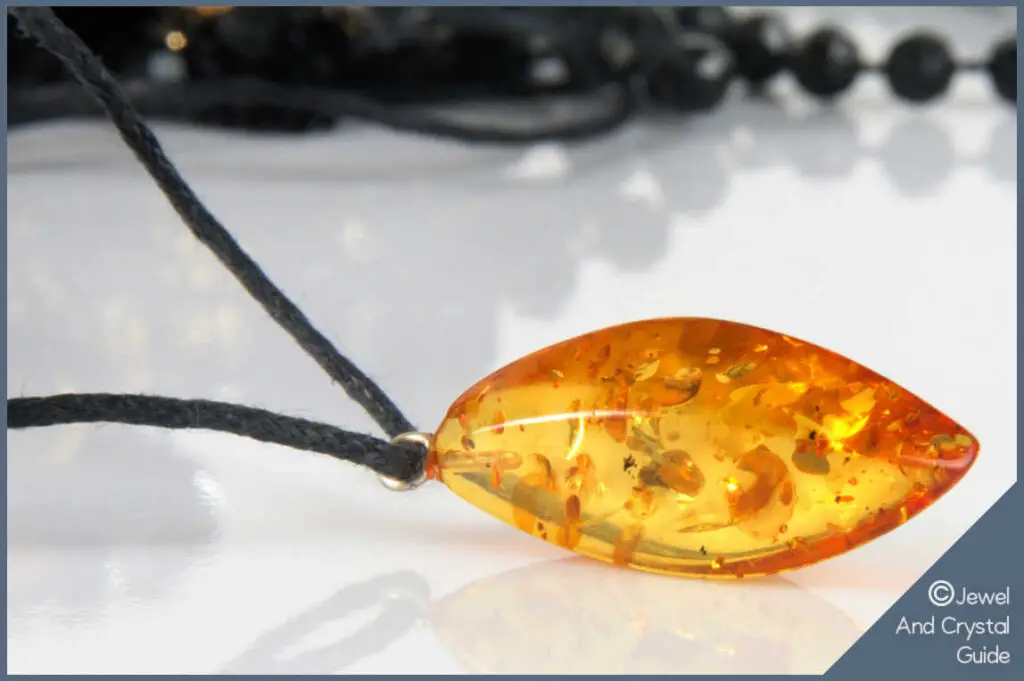
Does real amber jewelry have bugs?
Real amber jewelry can contain bugs, insects, or other small organisms, like spiders, ants, flies, or beetles. These insects and organisms got trapped in the sticky tree resin as it flowed down trees millions of years ago. They turned to fossil with the resin, and now they’re preserved in the amber.
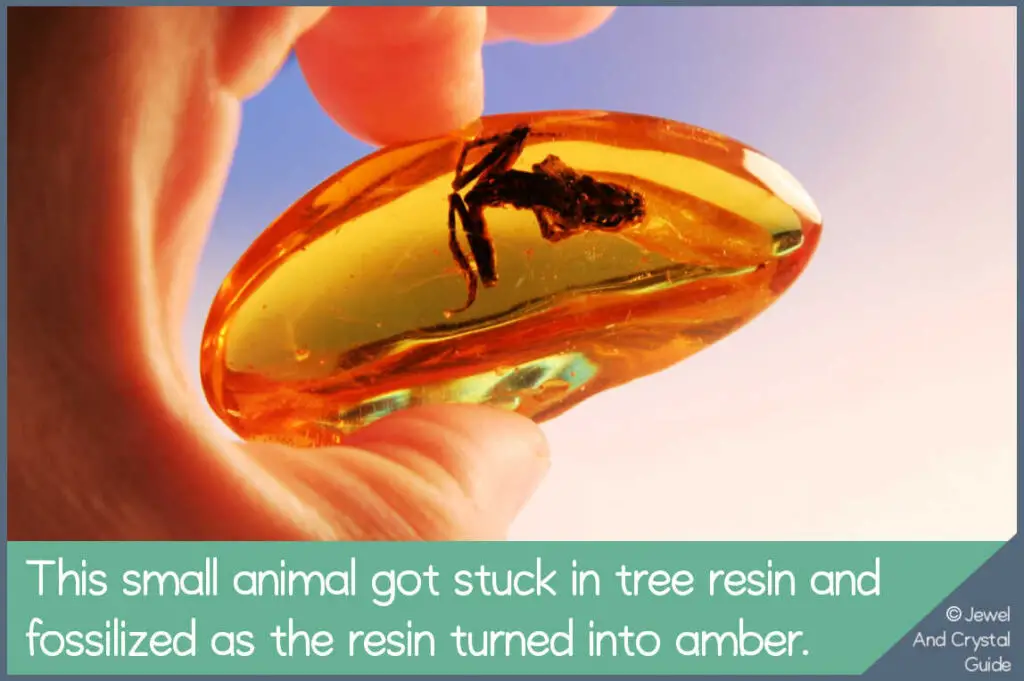
Does real amber scratch easily?
It is quite easy to scratch or scrape real amber. While amber has a moderate level of hardness, it can still be scratched by harder objects or materials, such as metal, glass, and other gemstones or crystals.
Does real amber have a smell?
Real amber can have a distinct smell when rubbed or heated. This smell is often described as piney, warm, and resinous. The aroma comes from compounds in the resin, and is influenced by things like age, composition, and impurities in the resin. Some amber has a strong scent, while other amber has a milder or less distinct aroma.
Does real amber break easily?
Real amber is not extremely fragile, but it can crack or break if it comes under excessive force, it’s dropped on a hard surface, or it’s subjected to sudden temperature changes. Also, amber can become brittle over time if it’s exposed to sunlight, heat, and drying, making it break more easily.






